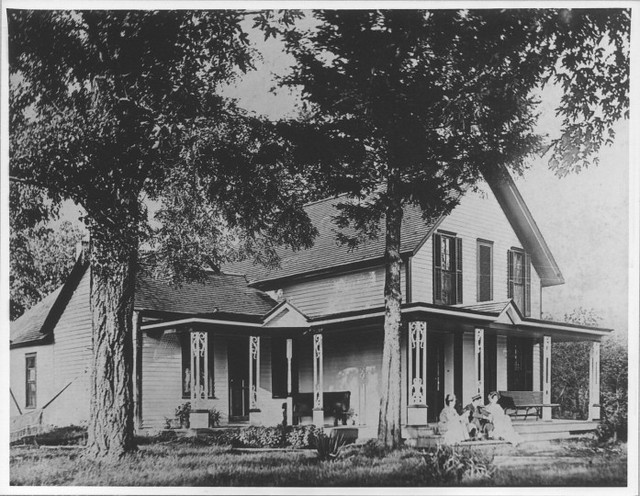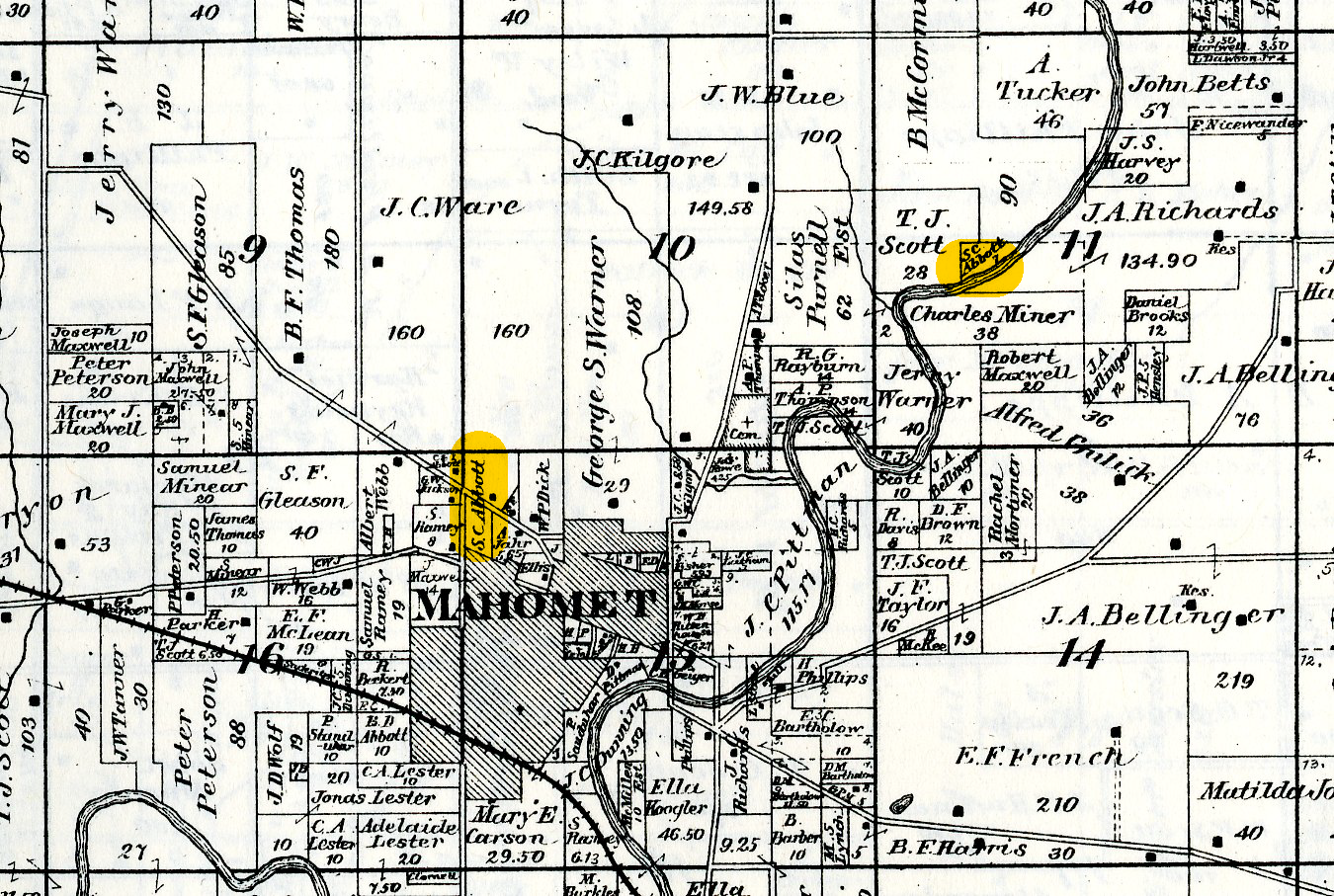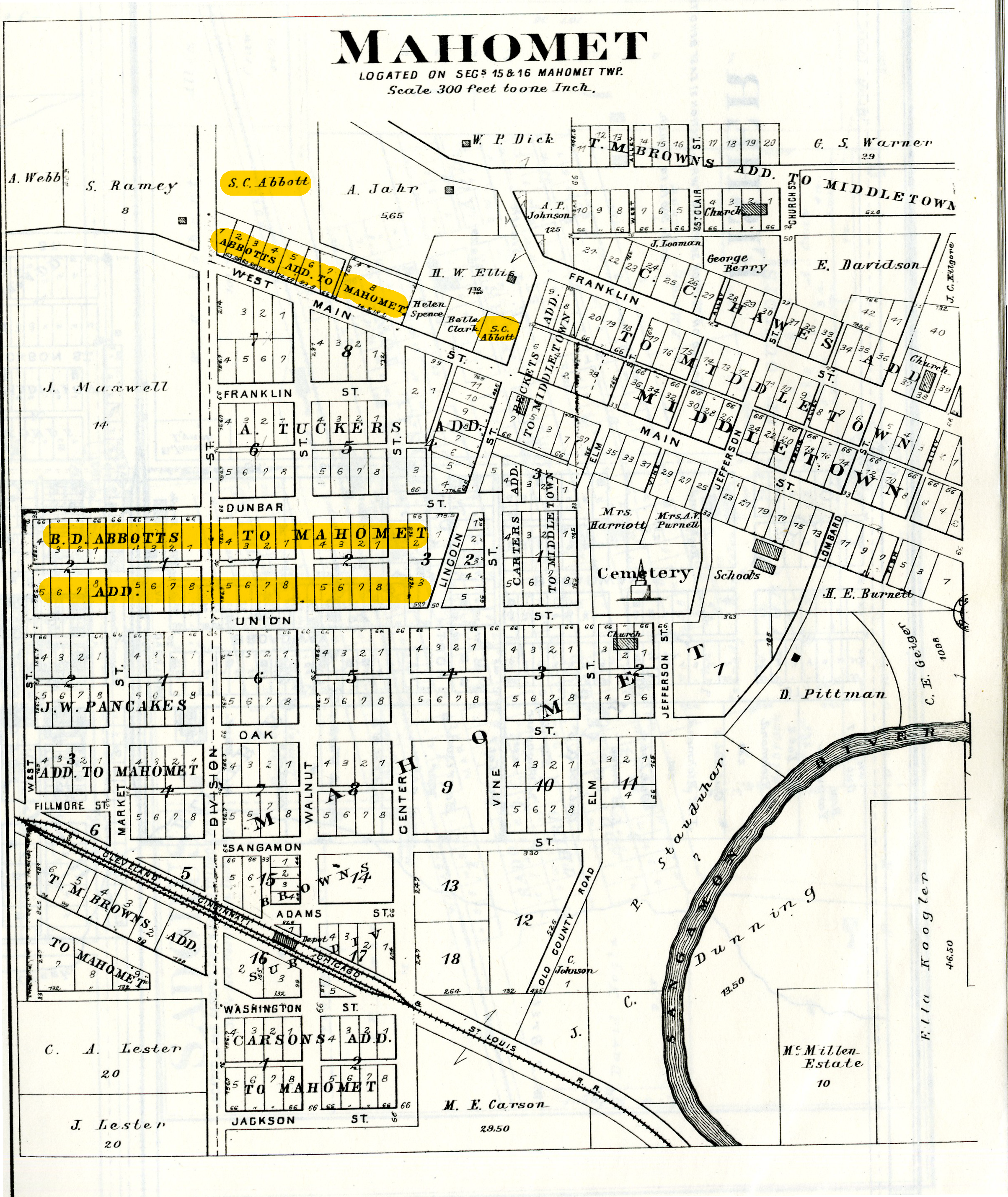
Stephen C. Abbott was born May 25, 1825, in Rockaway, NJ, to Abijah and Elizabeth (Conger) Abbott. One of eleven children, he left home to learn the blacksmith trade when he was 17 years old (1842). After his apprenticeship, he plied his trade up and down the east coast working in Boston; Augusta, ME; Providence, RI; Philadelphia; Charleston, SC; Savannah, GA, and New Orleans. When he couldn’t find work as a blacksmith, he worked in machine shops, on the wharves, or as a fireman on steamboats. In July 1847, after coming up the Mississippi River to St. Louis and the Illinois River to Peoria. Abbott traveled through Bloomington, Le Roy, and onto Urbana, searching for farmland. During this overland travel, he said he “always staid [sic] at farmhouses and paid bills with pictures and books.”
Once in Urbana, Abbott was determined to purchase farmland, even traveling by foot to the land office in Danville to enter sections given to him by an individual at Brewer’s Tavern. When he arrived at the land office, he was informed that the land was already entered. He encountered several land and financial schemes while in Urbana during this spell. Abbott says of one lodger he stayed with, “he seemed to have so many partners all came there at night I thought they were a lot of thieves and perhaps murderers.” Abbott soon left Urbana and headed back east to earn more money to return and purchase government land. By June 1849, he had saved up $200.00 and was on his way to Chicago by steamer and canal boats. There he became ill with “the ague” (most likely malaria), which forced him to travel back to Pittsburgh to recover.
In November 1849, he learned that gold was discovered in California, and Abbott decided to try his luck in San Francisco. Initially, he was going to travel around Cape Horn, but when his ship was declared unsafe, he settled on the overland route leaving from Independence, MO, on April 4, 1850. He spent three years in California engaged in mining, trading, and working as a teamster. Still focused on buying good prairie land, he returned to Champaign County in early 1853, purchasing 160 acres three miles west of Mahomet just over the Piatt County line. While working on the land, Abbott injured his leg using an ax. For a time, he feared he might lose his leg. Unable to develop the land, he sold his stake in October 1853 and returned home to New Jersey.
His stay in the Mid-Atlantic didn’t last long. After only three weeks of reuniting with family and friends and regaling them with tales from the west, he decided to return, lame leg and all. This time he bought 40 acres of land on the Piatt County line with a log house and a newly finished frame house. The ground had previously been broken up for farming and was fenced in. It also included five acres of timber. On February 23, 1854, he married Mary E. Rae, the daughter of John J. Rae, the tavern owner where Abbott recuperated after his injury. Mary Rae and Stephen would go on to have three children, Byron D., Laura, and Abijah Conger.

The Abbotts purchased several farm plots over the years until eventually purchasing property in the town of Mahomet, where he opened a blacksmith shop in 1858. Abbott’s pitch to his family about the charms of the west seems to have been compelling, for, over the years, he was joined by his brothers Barnabas, Ira, and David, sisters Phebe and Ann, and his mother and father.
Stephen Abbott was a well-known figure in Mahomet, serving as school treasurer, postmaster, and town supervisor. He was a devout Presbyterian, taught Sunday school during his pioneer days, and even rode the circuit as a preacher after attending Evanston Theological Seminary in the late-1850s. Abbott served in the Civil War, company H, 125th Illinois Volunteer Infantry, until he was mustered out in January 1865 due to being severely wounded by a minnie ball to the hip. His injury forced him to be on crutches for several years after the war.

Abbot was an extensive property holder, holding in addition to his property in and surrounding Mahomet 480 acres in the village of Harvard, Nebraska, that he purchased in 1871. In 1878, he estimated that his worth (property and money) equaled $22,000, and he was proud to relate that upon each child’s marriage, he and Mary were able to provide them with a brick residence in Mahomet. Abbott died on September 9, 1906, at the age of 81.
If you are interested in learning more about Stephen C. Abbott and Mahomet’s early days, you can see the Stephen C. Abbott Manuscript Collection at the Archives. This collection consists of a 34-page handwritten manuscript composed by Abbott in 1902 when he was seventy-seven years old.
Sherrie Bowser
Archives Librarian
